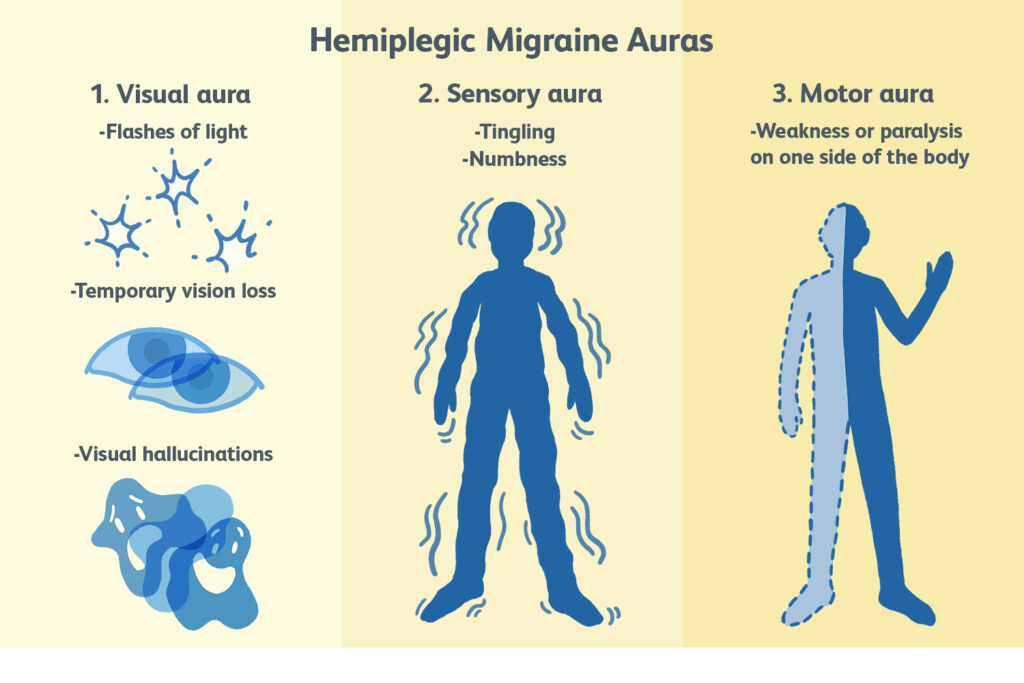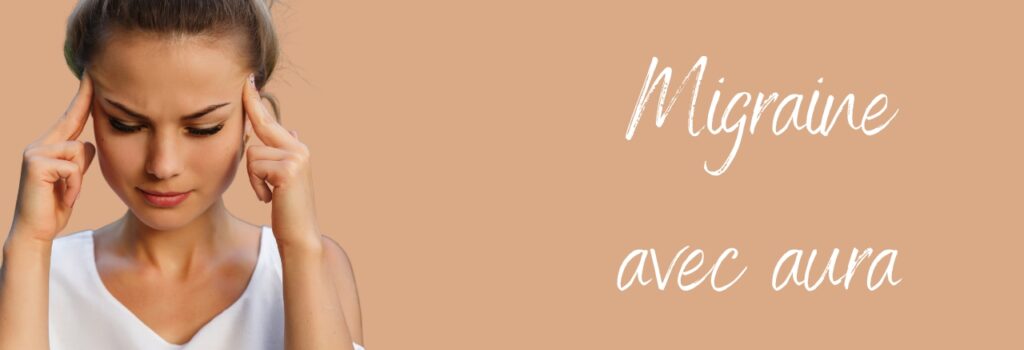Migraine with aura is a type of migraine that affects many people worldwide. It is characterized by a set of neurological symptoms that occur before or during a migraine attack. In this article, we will explore the various aspects of migraine with aura and how it differs from other types of migraines.

What is Migraine with Aura?
Migraine with aura is a type of migraine that involves a set of symptoms that occur before or during a migraine attack. These symptoms typically last between 5 and 60 minutes and can include visual disturbances, such as seeing flashes of light, zigzag lines, or blind spots. Other symptoms may include tingling sensations in the face, arms, or legs, difficulty speaking, and confusion.
How is Migraine with Aura Different from Other Types of Migraines?
Migraine with aura is different from other types of migraines in that it involves neurological symptoms that occur before or during a migraine attack. Other types of migraines, such as migraine without aura or chronic migraine, do not involve these symptoms.
What Causes Migraine with Aura?
The exact cause of migraine with aura is unknown, but it is believed to be related to changes in the brain’s chemistry and activity. Some people may be more susceptible to migraine with aura due to genetic factors, while others may be triggered by certain environmental factors, such as stress, hormonal changes, or changes in weather.
Treatment for Migraine with Aura
Treatment for migraine with aura typically involves a combination of medication and lifestyle changes. Medications may include pain relievers, such as aspirin or ibuprofen, or prescription medications, such as triptans or ergotamines. Lifestyle changes may include identifying and avoiding triggers, such as stress, certain foods, or changes in weather, as well as getting enough sleep, staying hydrated, and maintaining a healthy diet.

Preventing Migraine with Aura
Preventing migraine with aura may involve making lifestyle changes to avoid triggers, such as stress or certain foods. Additionally, some people may benefit from taking preventive medication, such as beta-blockers or anti-seizure medications.
Living with migraines with aura can be challenging, as it can disrupt daily activities and cause significant pain and discomfort. Migraines with aura can occur unexpectedly and without warning, making it difficult to plan activities or maintain a regular routine.
Some people may experience a range of symptoms during a migraine with aura attack, including visual disturbances, sensitivity to light and sound, nausea, and difficulty speaking or thinking clearly. These symptoms can make it difficult to focus, concentrate, or perform daily tasks, and may require taking time off from work or school.
Migraines with aura can also be triggered by certain factors, such as stress, lack of sleep, or certain foods, which can make it challenging to maintain a healthy lifestyle. People with migraines with aura may need to make changes to their daily routine, such as avoiding certain triggers, getting enough sleep, and maintaining a healthy diet and exercise regimen.
In addition to the physical symptoms, migraines with aura can also have an emotional impact on individuals, causing feelings of frustration, anxiety, and depression. It can be challenging to manage the unpredictability of migraine attacks, and many people with migraines with aura may feel like they are missing out on social events or important activities.
Despite these challenges, it is possible to manage migraines with aura through a combination of medication, lifestyle changes, and support from healthcare providers, friends, and family. It is important to work closely with a healthcare provider to develop a treatment plan that is tailored to your specific needs and lifestyle. By identifying triggers and taking steps to manage symptoms, people with migraines with aura can lead fulfilling lives and manage their condition effectively.
Preventing Migraine with Aura
Preventing migraines with aura can be challenging, as triggers can vary from person to person. However, there are several steps you can take to reduce the likelihood of experiencing a migraine with aura attack.
- Identify and avoid triggers: Keep a migraine diary to help identify triggers, such as certain foods, stress, lack of sleep, or hormonal changes. Once triggers are identified, try to avoid or minimize exposure to them as much as possible.
- Maintain a healthy lifestyle: A healthy lifestyle can help prevent migraines with aura. This includes regular exercise, getting enough sleep, eating a healthy diet, and staying hydrated.
- Manage stress: Stress can trigger migraines with aura, so it’s important to manage stress effectively. This can include practicing relaxation techniques such as meditation, deep breathing exercises, or yoga.
- Consider medication: Certain medications can help prevent migraines with aura attacks. These may include prescription medications such as beta-blockers, antidepressants, or anti-seizure drugs. Over-the-counter pain relievers, such as ibuprofen or aspirin, may also be effective for some people.
- Stay hydrated: Dehydration can trigger migraines with aura, so it’s important to drink plenty of water and avoid beverages that can dehydrate you, such as alcohol or caffeinated drinks.
- Maintain a regular sleep schedule: Lack of sleep or changes in sleep patterns can trigger migraines with aura, so it’s important to maintain a regular sleep schedule and get enough sleep each night.
- Talk to your healthcare provider: If you experience frequent migraines with aura, it’s important to talk to your healthcare provider. They may recommend additional treatment options, such as botox injections or nerve stimulation therapy.
By taking steps to prevent migraines with aura, you can reduce the likelihood of experiencing attacks and manage your condition more effectively. It’s important to work closely with your healthcare provider to develop a treatment plan that is tailored to your specific needs and lifestyle.



